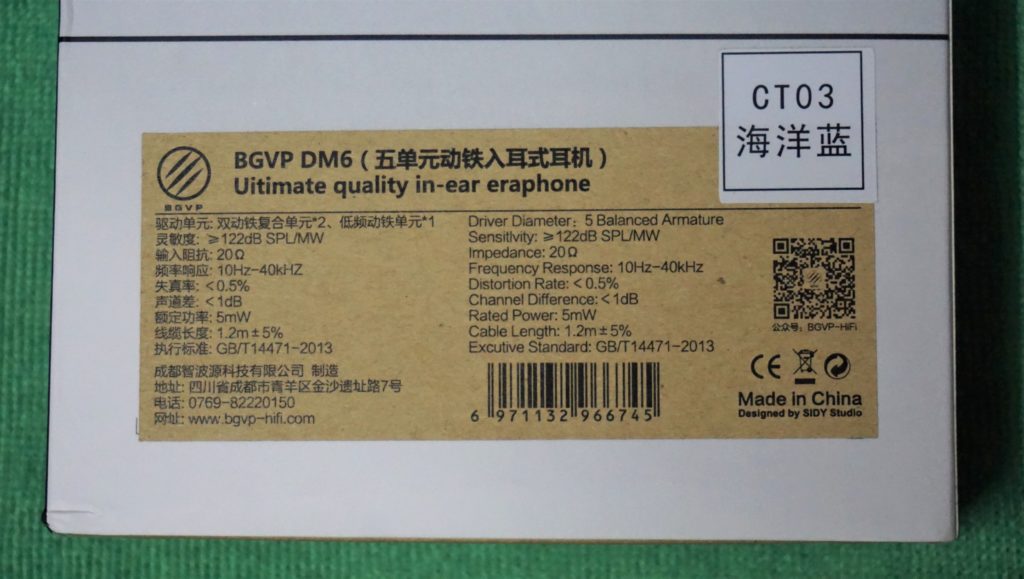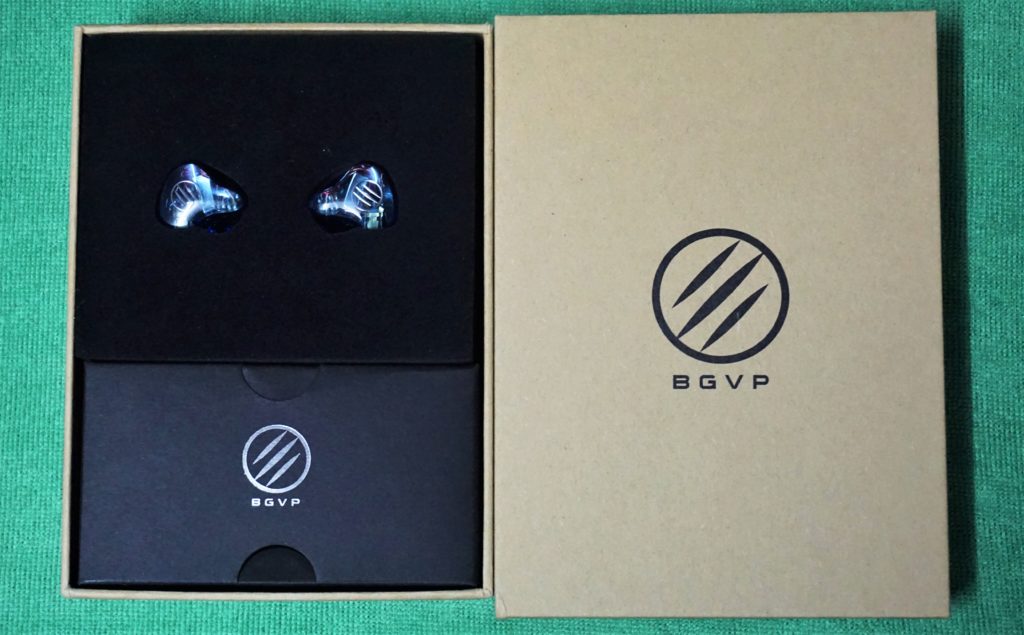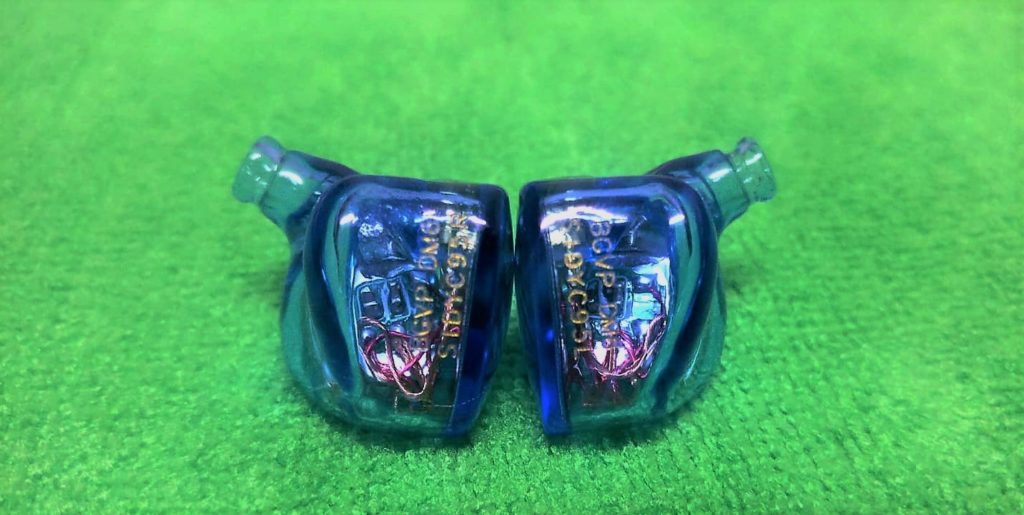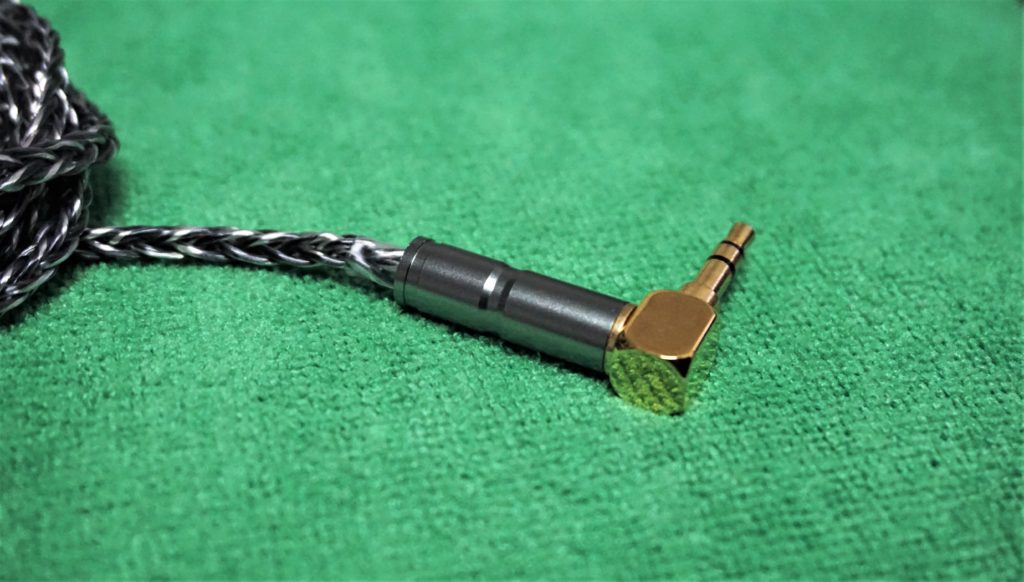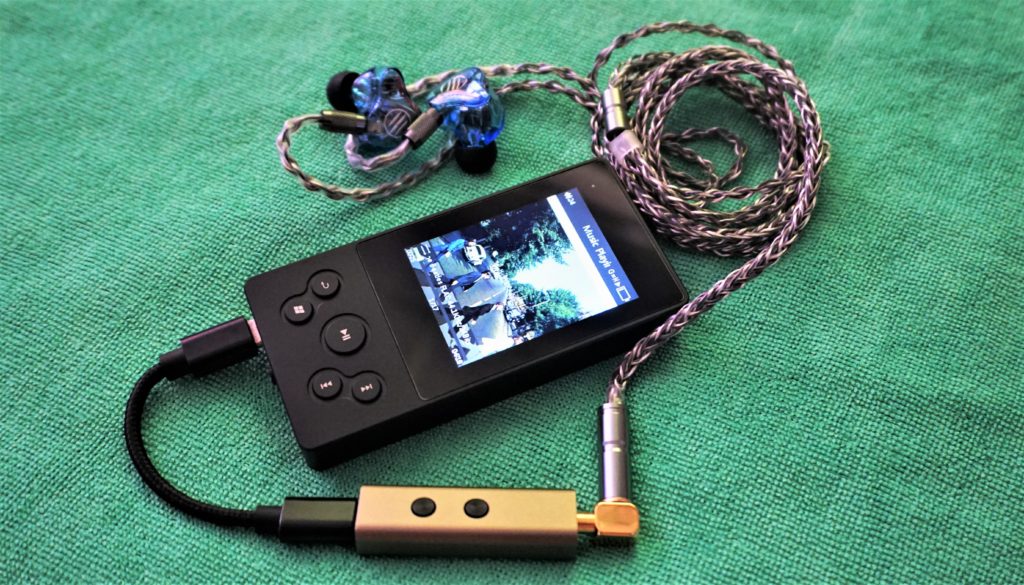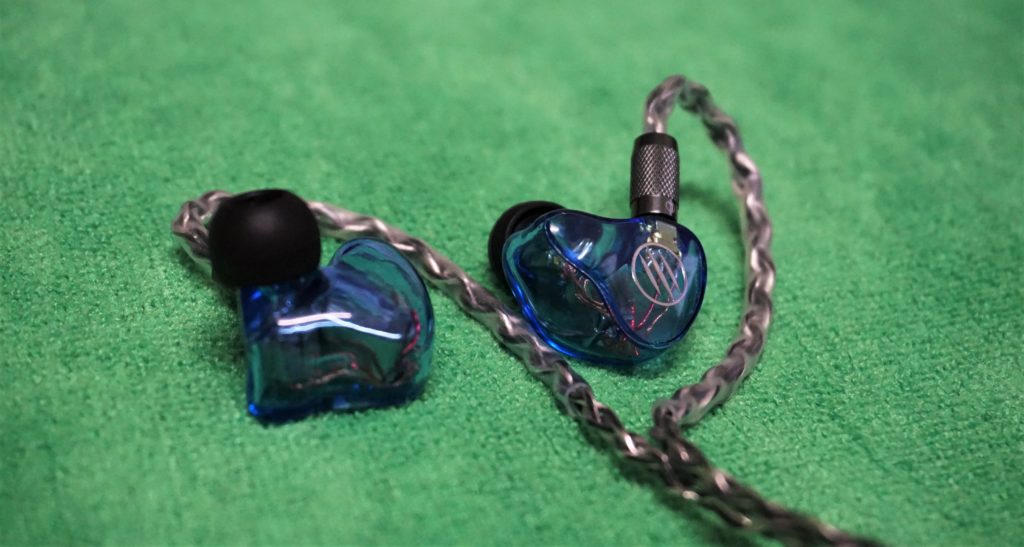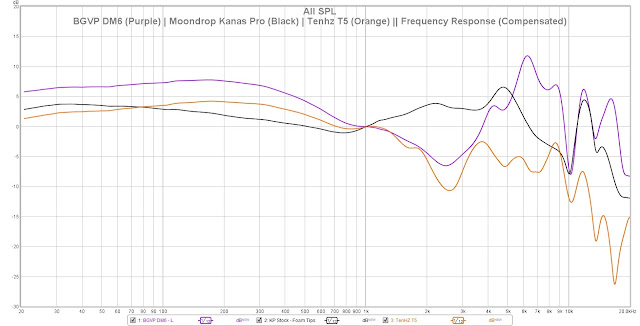BGVP stands for Brilliant, Grand and Vivacious Products. And yes that wasn’t BGVP actually stands for yet it would seem appropriate given that their roots stemmed from their desire to create great sounding low-cost options to compete with the bigger audiophile IEM names. What started out as SIDY in China now became BGVP and has now started to break the low-cost tier mold with the launch of their $200 IEM.
This $200 IEM came in the form of the BGVP DM6, a 5 Balanced Armature IEM with drivers from Knowles, the trusted single BA 22955 and the dual BA 30017. The other dual BA drivers are custom-tuned by BGVP themselves and with the DM6 being made of acrylic, it allows for a pseudo-CIEM feel with numerous faceplate and shell design options as well as a fully customizable setup. The sample unit to be realviewed that was sent to me came in the Ocean/Marine Blue clear shell, you can get the different design options from
Linsoul Direct off Amazon,
Linsoul Audio’s official site and from
DD Audio off AliExpress. The DM6 is spec’d out with a 10Hz to 40kHz Frequency Response, 122 dB Sensitivity and a 20 Ohm Impedance.
BGVP started with a vision to provide low-cost economical audiophile options to counter the extravagant prices charged by other household IEM brands and when they themselves release a $200 DM6 IEM, we start to ask ourselves, is it time to go back and put your faith on brands with greater market presence or the DM6 just another great price: performance IEM ready to slug it out with other notable 5 BA IEMs. Audio Realviews is here to take that question on.
Packaging and Build Quality
No one ever said that low-cost means your brand would look like crap right off the bat and in BGVP’s case, while it doesn’t really show low-cost packaging, it also doesn’t look premium. The white cardboard sleeve shows the necessary BGVP brand and DM6 information, it would have been great to see a DM6 photo upfront to easily identify it but yeah, low-cost. Underneath the sleeve is a brown cardboard box with black foam cutouts where the DM6 sits and a black box with all the included ear tips stored inside. The eartips that were included featured a set of black wide bore silicon eartips (S, M, L), a set of black narrow bore silicon eartips (S, M, L) and 1 black narrow bore foam tips with its own plastic case, not low-cost. The DM6 has 2 cable options although either one would be shipped randomly unless you specifically request for a specific type.
The DM6 shell is made of acrylic resin and 3D printed using Germany’s Envision TEC apparatus, a fully customized option can be done to suit your own personalized shell, faceplate and faceplate design choice and would take 10-30 days lead time. The build quality from my unit is great and doesn’t show any imperfections or dents, it is well casted and molded. It utilizes a gold-plated MMCX connection with an angled nozzle and a minor nozzle lip which didn’t give the best tip-rolling experience. Comfort was great for me and isolation was also above average, the pseudo-CIEM feel is working like it’s supposed to.
BGVP offers the DM6 with 2 different stock cables and if not specifically requested, will be shipped with either the 6N 8core SPC cable or a Copper/SPC round braided cable. My realview unit came with the Copper/SPC round braided one and it exhibits some force of tension unlike the cable from the Tin HIFI T3 which has almost the same feel to it yet more fold friendly. Both cables comes with a metal housing gold-plated 3.5mm L-plug with a plastic-injected metal Y-split and a clear plastic chin slider. A clear plastic memory wire is also present to aid over-ear usage and finishing it up with a metal barrel MMCX connection with white L-R markings. The cable isn’t microphonic at all and storage was great despite the aforementioned tension.
I’ve actually noticed that the BGVP DM6 got a lot of attention and was rather hyped up at some extent resulting to issues of completing successfully placed orders and meeting delivery dates. BGVP even addressed this issue which was unexpected, I’m used to seeing logistics issues and the mother company just sits idle waiting for the whines to die down. My realview unit was supposed to arrive sometime around end of 2018 but instead arrived early February which by that time, hype for the DM6 was dying down.
The BGVP sounded balanced overall from my almost 2-month use of it. The stock eartips that was included in the packaged wasn’t the best experience yet I was glad that the JVC Spiral Dots got the job done. Remember that 122 dB Sensitivity earlier? Damn, it reared its head here and there on my sources which opted me to use the xDuoo x3ii with the Zorloo ZuperDAC-S via USB-C out to totally eliminate hissing although hissing wasn’t observed on my OnePlus 3T device yet was completely annoying off my Sony CAS-1 desktop system, Zishan DSD Pro and direct from the xDuoo x3ii, shout out to Zorloo for the solution.
Lows
Bulk of the BGVP products that I have tried showed that they cater towards the warmer sound spectrum and the DM6 retains a part of that signature. DeadMau5’s “Glish” in 16/44 FLAC shows that the sub-bass hits and depth provides ample power and has great weight to it resulting in an enjoyable sub-bass drop that resonates well. Bass hits are full-bodied and pans out in a subtle lingering manner. The DM6 performs well on the lower end frequency with no sacrificial loss of clarity.
Midrange
With BGVP’s vision of providing low-cost options, a well implemented sound signature that can be consistently recreated across their lineup is paramount and in this aspect, their midrange performance is starting to take form. The DM6 showcases a smooth sounding midrange performance. Michael Jackson’s “Billie Jean” in 16/44 FLAC highlights a clear lower midrange delivery with his vocals being rendered lean and defined and the accompanying lower midrange tones creates a solid approach. There is no upper midrange boost present on the DM6 yet still gives out an impressive female vocal range especially Susan Wong’s “Killing Me Softly” in 16/44 FLAC rendition, a great de-stressing and calming interpretation.
Highs
The DM6 boasts Knowles BA drivers to tackle the high frequencies and I’m expecting another solid performance in this aspect. With my inherent preference for the bright sound signature and always on the lookout for that craved treble bite, kick and sparkle. The DM6 did just enough to satisfy my craving at this end although it didn’t stop there, the DM6 at times exhibited sudden high frequency bleed which is unwelcome. Savage Garden’s “Truly, Madly, Deeply” in 16/44 FLAC with its fundamental upper frequency rendering showed that the DM6 can give out some snap but still devoid of shrill and peaky highs although at times sibilance is observed.
Soundstage and Imaging
Intimate and depth centric, the DM6 shows that it performs great on imaging with instrumental tones easily distinguishable with no noticeable overlapping. Left to right and right to left panning is great in IEM parameters. The DM6’s sudden high frequency bleeds and the occasional sibilant tones brings its great imaging clarity a step back.
The BGVP DM6 is BGVP’s attempt to breach the low-tier market and at $200, it is no longer to be considered a low-cost option yet an alternative for audiophiles looking to also breach towards the mid-tier IEM game. Aesthetically and comfort-wise, the DM6 is a no-brainer recommendation although the lack of a case at a supposed mid-tiered IEM is weird.
The hype surrounding the DM6 was in a way warranted giving how it performed overall with an easy to love relaxing midrange and a stellar lower frequency performance. The downsides and flaws of the DM6 were highlighted when the upper frequencies comes into play. The sudden high frequency bleeds and the presence of sibilance surely turns off some, not to mention that the DM6 is very sensitive and picky with its sources with its inherent hiss-prone nature. I personally still enjoy the BGVP DM6 especially with the JVC Spiral Dots on it, only trebleheads like me who aren’t sensitive enough to the aggressive upper frequency the DM6 exhibits would best suit BGVP’s 5BA baby.




